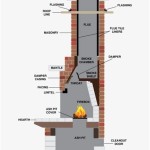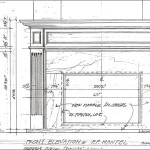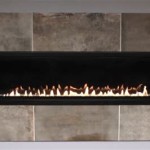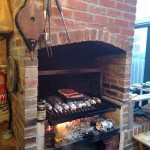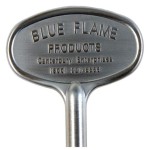How Much Does It Cost To Install A Gas Fireplace Insert?
Installing a gas fireplace insert can significantly enhance a home's ambiance and heating efficiency. However, understanding the associated costs is crucial before embarking on such a project. The total expense involved in installing a gas fireplace insert is influenced by a variety of factors, ranging from the insert's make and model to the complexity of the installation process itself. This article provides a comprehensive overview of the elements that contribute to the overall cost, enabling homeowners to make informed decisions.
A gas fireplace insert is designed to fit directly into an existing fireplace opening, transforming a traditional wood-burning fireplace into a more convenient and efficient gas-burning unit. This conversion offers advantages such as ease of use, consistent heat output, and reduced maintenance. Instead of manually loading wood and dealing with ash cleanup, homeowners can ignite the gas fireplace with the push of a button or the flick of a switch. Furthermore, gas fireplace inserts often provide better heating control compared to wood-burning fireplaces, allowing for precise temperature adjustments.
The cost breakdown typically includes the price of the insert itself, the installation labor, and any necessary materials or modifications to the existing fireplace structure. The price of the insert can vary widely, depending on its BTU rating, features, and aesthetic design. Labor costs are determined by the complexity of the installation, which may involve running gas lines, installing venting systems, and ensuring proper connections. Additional costs could arise if structural modifications, such as chimney repairs or flue lining, are required.
The Cost of the Gas Fireplace Insert
The cost of the gas fireplace insert itself forms a substantial portion of the overall expense. These inserts are available in a wide range of styles, sizes, and heating capacities. Basic models may start at around $1,500, while high-end units with advanced features and elaborate designs can easily exceed $5,000 or more. Factors such as the BTU (British Thermal Unit) rating, which indicates the insert's heating power, influence the price. Higher BTU ratings typically mean a larger heating capacity and a higher price point.
The aesthetic design of the insert also plays a role in determining its cost. Inserts with realistic flame patterns, decorative logs, and custom finishes generally command a higher price. Some models include programmable thermostats, remote controls, and other convenience features that add to their value. The brand reputation and warranty offered by the manufacturer can also impact the price, with more established brands and longer warranty periods typically associated with higher costs.
Furthermore, the type of gas used by the insert, whether natural gas or propane, can influence the purchase decision. Natural gas inserts are generally more economical to operate in areas with readily available natural gas lines. However, propane inserts may be necessary in areas where natural gas is not available, requiring the installation of a propane tank and gas lines, which adds to the initial investment.
Installation Labor and Associated Costs
The cost of labor represents another significant component of the total installation expense. Hiring a qualified and licensed HVAC technician or fireplace installer is essential to ensure a safe and proper installation. Installation costs can vary depending on the complexity of the project, the location of the gas line, and the condition of the existing fireplace and chimney. Simple installations may cost between $500 and $1,000, while more complex installations involving extensive gas line work or chimney repairs can range from $1,500 to $3,000 or more.
The installation process typically involves several steps, including assessing the existing fireplace, running a gas line to the fireplace opening, installing a venting system (either direct vent or B-vent), connecting the gas line to the insert, and testing the unit to ensure proper operation. The complexity of these steps can vary depending on the specific circumstances of each installation. For instance, accessing the main gas line may require excavation or modifications to existing plumbing, which can increase labor costs.
Venting systems are crucial for safely exhausting combustion gases from the gas fireplace insert. Direct vent systems draw combustion air from outside and vent exhaust gases directly outdoors through a sealed system. B-vent systems, on the other hand, rely on the existing chimney to vent exhaust gases. The choice of venting system can influence the installation cost, as direct vent systems may require additional wall penetrations and modifications.
Additional Costs and Considerations
Beyond the cost of the insert and the installation labor, other potential expenses should be considered. These may include the cost of a gas line if one is not already present. Running a new gas line from the main gas supply to the fireplace location can add several hundred to several thousand dollars, depending on the distance and the complexity of the routing. Permit fees may also be required by local building codes, adding to the overall expense. The cost of permits can vary depending on the municipality and the scope of the project.
Chimney inspections and repairs may be necessary to ensure the safe and efficient operation of the gas fireplace insert. A qualified chimney sweep can assess the condition of the chimney and recommend any necessary repairs, such as flue lining or chimney cap replacements. These repairs can add significantly to the overall cost, but they are essential for preventing potential hazards such as carbon monoxide leaks or chimney fires.
Homeowners may also consider upgrading the fireplace surround or mantel to complement the new gas fireplace insert. This can involve cosmetic changes to the fireplace area, such as installing new tiles, painting the surrounding walls, or adding decorative elements. While these upgrades are not essential, they can enhance the aesthetic appeal of the fireplace and create a more cohesive design.
In summary, the cost to install a gas fireplace insert is a composite of the insert's price, installation labor, gas line installation, venting system costs, permit fees, chimney repairs, and optional cosmetic upgrades. A thorough evaluation of each of these components is crucial for accurately estimating the overall expense and ensuring a successful installation. Obtaining multiple quotes from qualified installers and carefully reviewing the scope of work can help homeowners make informed decisions and stay within their budget.

How Much Does A Gas Fireplace Cost Fireplaces Direct Learning Center

Gas Fireplace Cost Guide Unit Add Ons Installation More

How Much Does It Cost To Install A Gas Fireplace Homeserve Usa

How Much Does A Gas Fireplace Cost Fireplaces Direct Learning Center

Gas Fireplace Insert Cost Forbes Home

Estimated Page Fireplaces Stoves Inserts Wood Gas Pellet

Gas Fireplace Installation Cost Dbs Inc

What Does It Cost To Install A Fireplace Vs Wood Stove Stamford Fireplaces

How Much Does A Fireplace Insert Cost 2024 Data

How Much Does It Cost To Run Gas Fireplace In 2024

